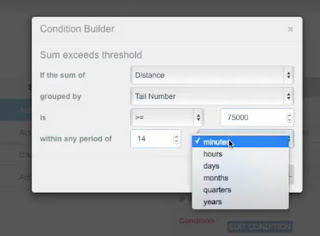When I first described Customer Data Platforms two and half years ago, all the vendors offered an application such as predictive analytics or campaign management in addition to the “pure” CDP function of building the customer database. Since then, some “pure” CDPs have emerged, notably among vendors with roots in Web page tag management – Tealium, Signal, and Ensighten (which just raised $53 million). Other data collection specialists include Segment.com, Aginity, Umbel, Lytics, NGData, and Woopra, although some of these do supplement database building with predictive model scores, segmentation, and/or event-based triggers.
Openprise falls roughly into this second category. It’s primarily used to set up data processing flows for data cleaning, matching, and lead routing. But it can also apply segment tags and send out alerts when specified conditions are met. What it doesn’t do is maintain a permanent customer database accessible to other systems for campaigns and execution. This means Openprise doesn’t meet the technical definition of a CDP. But Openprise could post data to such a database. And since the essence of the CDP concept is letting marketers build the customer database for themselves, Openprise arguably provides the most important part of a CDP solution.
Current clients use Openprise in more modest ways, however. Most are marketing and sales operations staff supporting Salesforce.com and Marketo who use Openprise to supplement the limited data management capabilities native to those systems. Openprise also integrates today with Google Apps and the Amazon Redshift database. Integrations with Oracle Eloqua, HubSpot and Salesforce Pardot are planned by end of this year. The Marketo integration reads only the lead object, although the activities object is being added. The Salesforce integration reads leads, contacts, opportunities, campaigns and accounts and will add custom objects.
Openprise works by connecting data sources, which are typically lists but sometimes API feeds, to “pipelines” that contain a sequence of if/then rules. Each rule checks whether a record meets a set of conditions (the “if”) and executes specified actions on those that qualify (the “then”). The interface lets users set up the flows, rules, and actions without writing programming code or scripts, usually by completing templates made up of forms with drop-down lists of possible answers. For example, a complex condition such as “sum exceeds threshold” would have form with blanks where the user specifies the variable to sum, variable to group by, the comparison operator, threshold value, and time period. This still takes some highly structured thinking – it’s far from writing an English language sentence – but is well within the capabilities of anyone likely to be in charge of operating a marketing automation or CRM system.
Of course, the value of such a system depends on the actual actions it makes available. The two basic actions in Openprise are sending alerts and setting attribute values. Alerts can be based on complex rules and delivered via email or text message. Attribute values can be used to set segment tags, assign lead owners for routing, and cleanse data. Cleansing features include normalization to apply rules, standardize formats, and match against reference tables. The system can also fill in missing values based on relationships such as inferring city and state from Zip code. Matching can apply fuzzy methods, use rules to handle near-matches, and set priorities when several possible matches are available. Parsing can scan a text block for keywords and extract them.
Openprise already has special features to standardize job titles and roles and is working on company name clean up. It plans to add connectors for Dun and Bradsteet, Zoominfo and Data.com to verify and enhance customer information.
Updated records can be returned to the original source or sent to a different destination. The Amazon Redshift connector means Openprise could feed a data warehouse or CDP available to other analytic and execution systems. Users can assign access rights to different data sets and to different elements within a set. They can then have the system send file extracts of the appropriate data to different recipients, a feature often used to share data with channel partners. Most pipelines execute as batch processes, either on demand or on a user-specified schedule. Some can run in real time through API calls.
The system also provides some data analysis capabilities, including time series, ranking, pie charts, word frequency, calendars, time of day, and trend reports. These are used mostly to help assess data quality and to profile new inputs.
Openprise says new customers usually get about two hours of training, during which they map a couple of data sources and build a sample pipeline. The vendor also provides training videos and “cookbooks” that show how to set up common processes such as lead cleansing and merging two lists.
Pricing of Openprise is based on data volume processed, not number of records. Users can run 50 MB per month without charge. Running 100 MB per month costs $100 and running 1 GB per month costs $1,000. There also a free trial.
Openprise was released in late September and had accrued more than 30 users by mid-October. It is available on Marketo LaunchPoint and will eventually be added to Salesforce AppExchange.




![[Research Round-Up] The Latest From NetLine On B2B Content Consumption](https://customerthink.com/wp-content/uploads/email-g56aa02a47_1280-pixabay-email-marketing-218x150.png)
